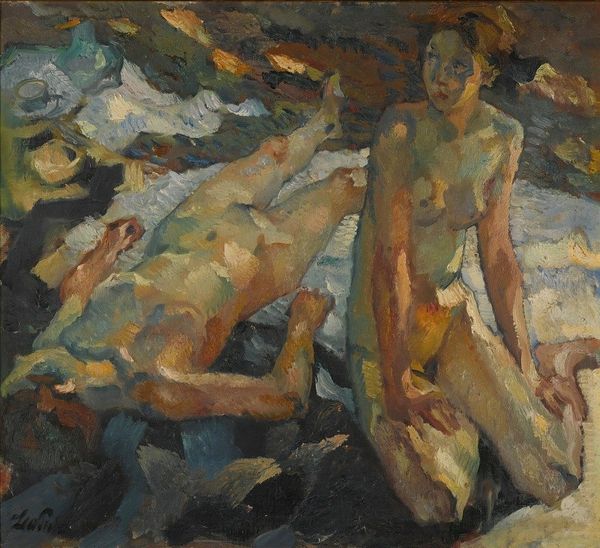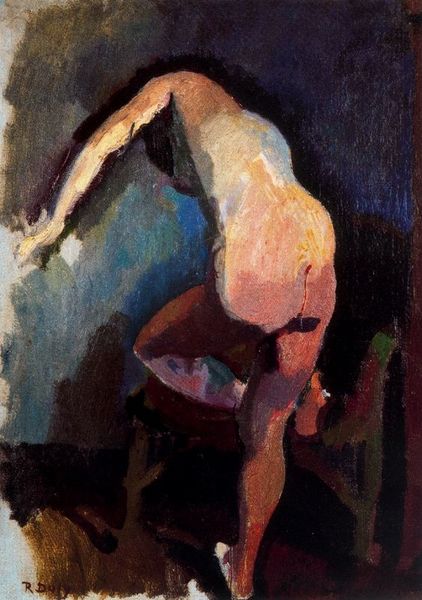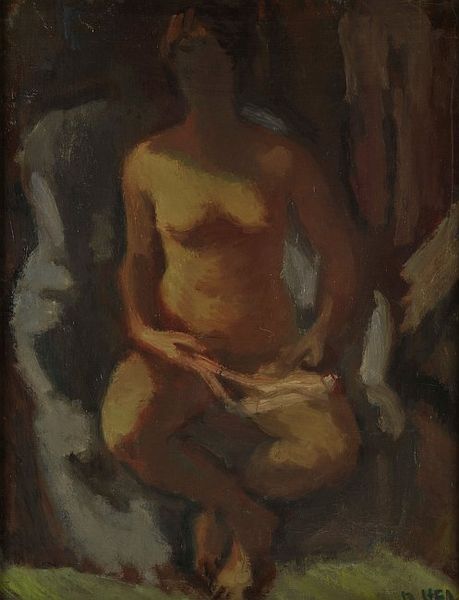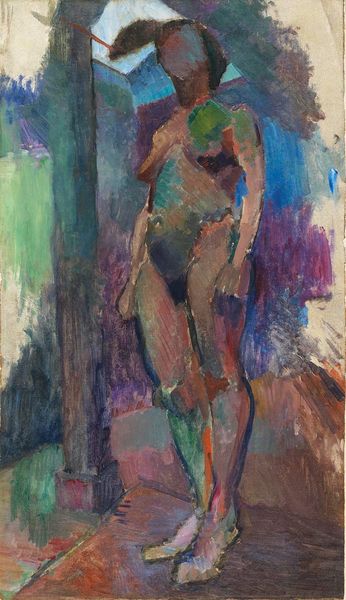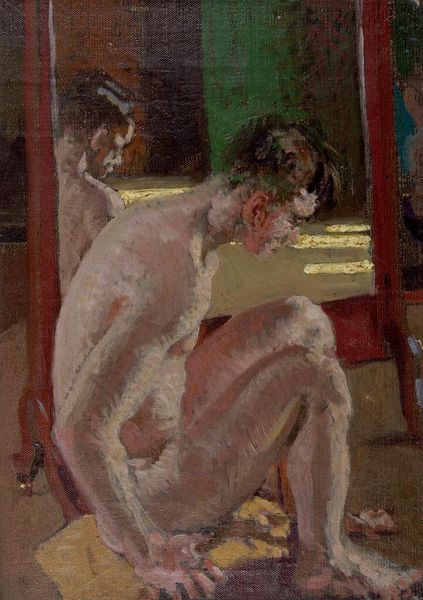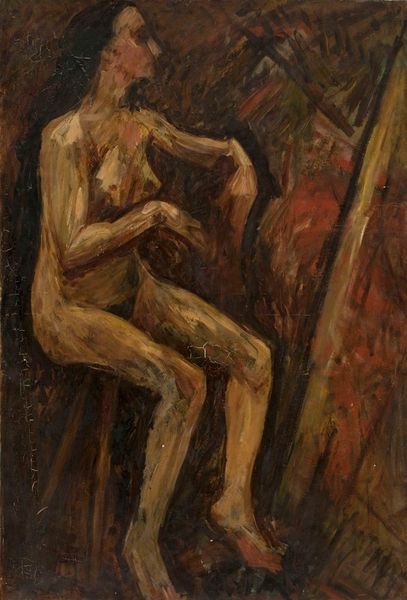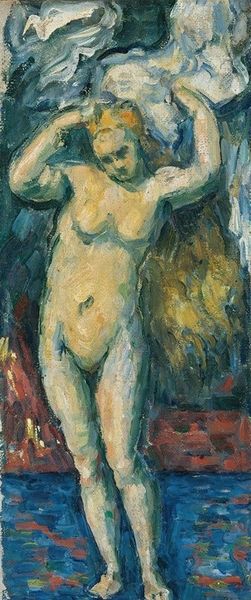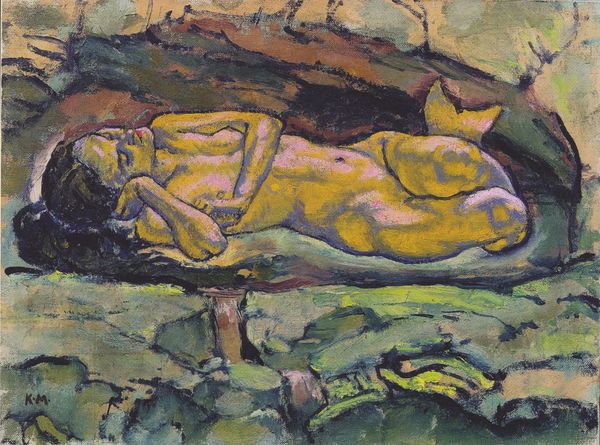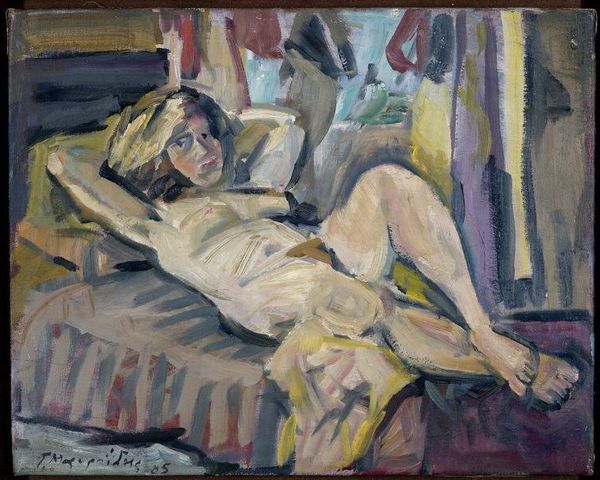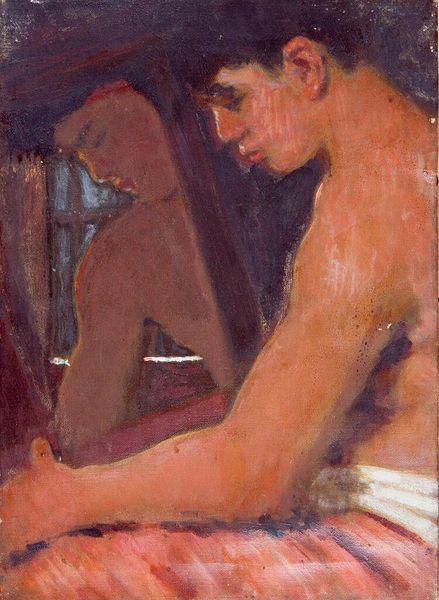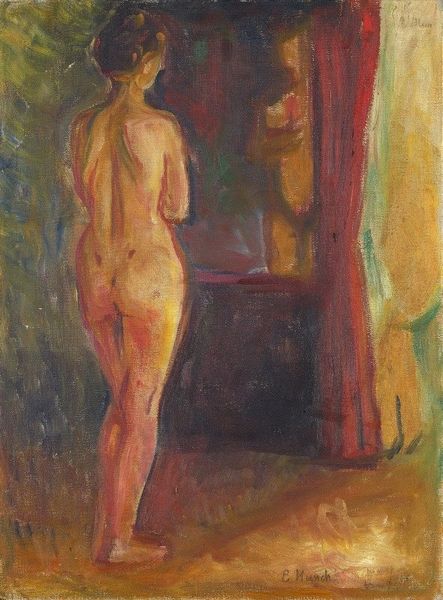
oil-paint, impasto
#
portrait
#
figurative
#
oil-paint
#
figuration
#
oil painting
#
impasto
#
genre-painting
#
nude
Copyright: Public Domain: Artvee
Editor: We're looking at "In the Seraglio" by Leo Putz, likely an oil painting, judging by the visible brushstrokes and texture. There's something raw and unsettling about the way the figure is rendered, and I am curious: What draws your eye in this work? Curator: Immediately, the materiality. Notice the thick impasto – how Putz manipulated the oil paint itself, almost sculpting the figure and her surroundings. It speaks to a certain physicality, a labor that challenges the idealized nude we often see. What can you tell me about the probable sources, supply chain, or manufacture of these specific oil paints around the time of Putz’s production? Editor: Good question. I can research into that. I'm starting to see this work, less as a passive depiction of beauty and more as… an active process? The paint itself becomes a subject. Curator: Exactly. Think about the implications. Is it subverting traditional artistic hierarchies? High art versus craft? The very act of painting becomes foregrounded. This impasto technique suggests the labor involved, a directness of process that breaks with academic conventions, thus commenting on societal production and hierarchies of labor, doesn't it? Editor: That makes so much sense! By making the process visible, Putz seems to be inviting us to consider the labour that goes into creating an image, almost disrupting its commodity status. Curator: And consider the title: "In the Seraglio." Doesn't the use of the exotic setting further complicate the role and function of women depicted here and, ultimately, of all women depicted in painting throughout history? It is crucial to not fall into tropes of easy aesthetic admiration. Editor: That is so true. Wow, this painting went from unsettling to… surprisingly engaging, especially by examining its materials and what they represent in the act of creation. Curator: Absolutely, now you’re starting to dig beneath the surface by using art and production to connect to culture and societal expectations. This gives one so much more to contemplate.
Comments
No comments
Be the first to comment and join the conversation on the ultimate creative platform.
